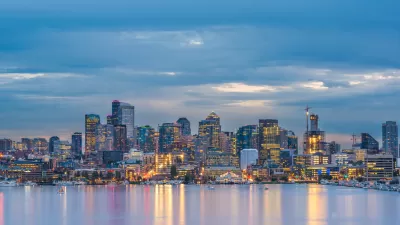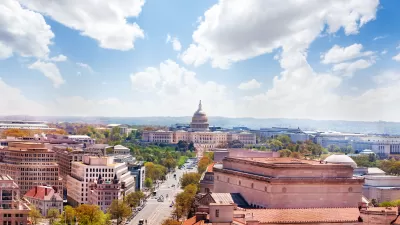In this column from Governing, Peter Harkness looks at the increasing influence and power of metropolitan areas.
"As the general election contest gets under way, the Brookings Institution's Metropolitan Policy Program has embarked on an ambitious and clearly well-funded bid to change the way we look at the country and its economy, with the hope of influencing the debate during the campaign and then policy making by the new administration and Congress."
"The message goes like this: The top 100 metropolitan areas cover only 12 percent of the national land mass but are home to about two-thirds of its population and its jobs - and even larger shares of "innovative activity": 78 percent of its patents, 75 percent of those with graduate degrees, 79 percent of air cargo, 94 percent of venture capital funding, and so on. In all, they generate three-quarters of the gross domestic product."
"Add in more than 200 other smaller metro areas, and we truly are looking at a metropolitan nation. Peirce puts it in context: "As economic actors, major U.S. citistates compete in size with major world nations. In gross product, the New York region ranks 13th among the world's top economies, just ahead of Australia, Argentina and Russia. The Los Angeles citistate is bigger than Korea, Chicago greater than Taiwan or Switzerland." And so, he says, citistates are how "our world is now organizing itself" away from an old way of thinking (federal, state, local) to a new way: global, regional and neighborhood."
FULL STORY: The Metropolitan Era

Maui's Vacation Rental Debate Turns Ugly
Verbal attacks, misinformation campaigns and fistfights plague a high-stakes debate to convert thousands of vacation rentals into long-term housing.

Planetizen Federal Action Tracker
A weekly monitor of how Trump’s orders and actions are impacting planners and planning in America.

San Francisco Suspends Traffic Calming Amidst Record Deaths
Citing “a challenging fiscal landscape,” the city will cease the program on the heels of 42 traffic deaths, including 24 pedestrians.

Defunct Pittsburgh Power Plant to Become Residential Tower
A decommissioned steam heat plant will be redeveloped into almost 100 affordable housing units.

Trump Prompts Restructuring of Transportation Research Board in “Unprecedented Overreach”
The TRB has eliminated more than half of its committees including those focused on climate, equity, and cities.

Amtrak Rolls Out New Orleans to Alabama “Mardi Gras” Train
The new service will operate morning and evening departures between Mobile and New Orleans.
Urban Design for Planners 1: Software Tools
This six-course series explores essential urban design concepts using open source software and equips planners with the tools they need to participate fully in the urban design process.
Planning for Universal Design
Learn the tools for implementing Universal Design in planning regulations.
Heyer Gruel & Associates PA
JM Goldson LLC
Custer County Colorado
City of Camden Redevelopment Agency
City of Astoria
Transportation Research & Education Center (TREC) at Portland State University
Jefferson Parish Government
Camden Redevelopment Agency
City of Claremont





























